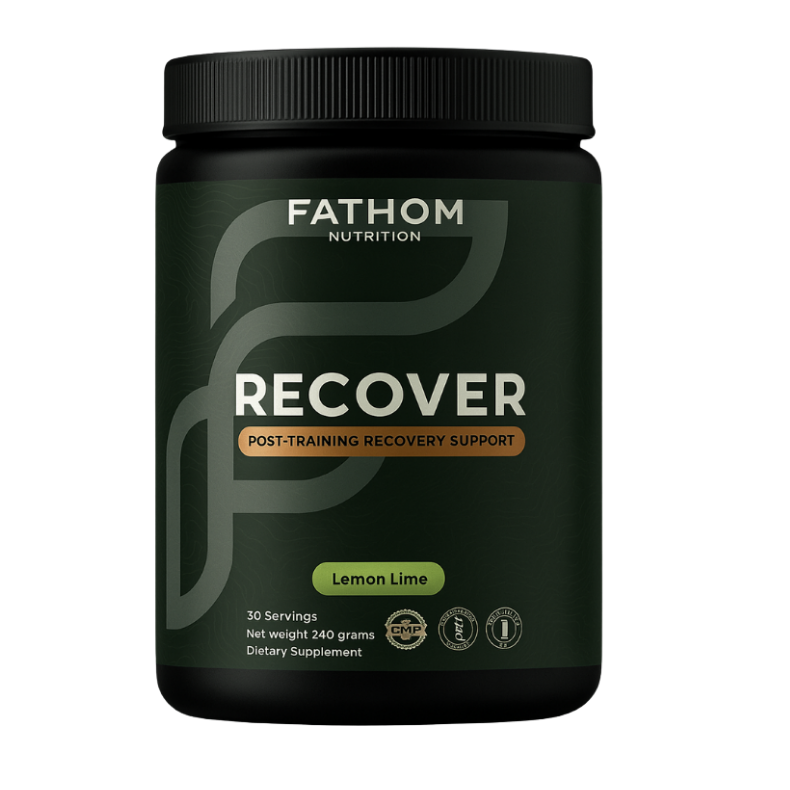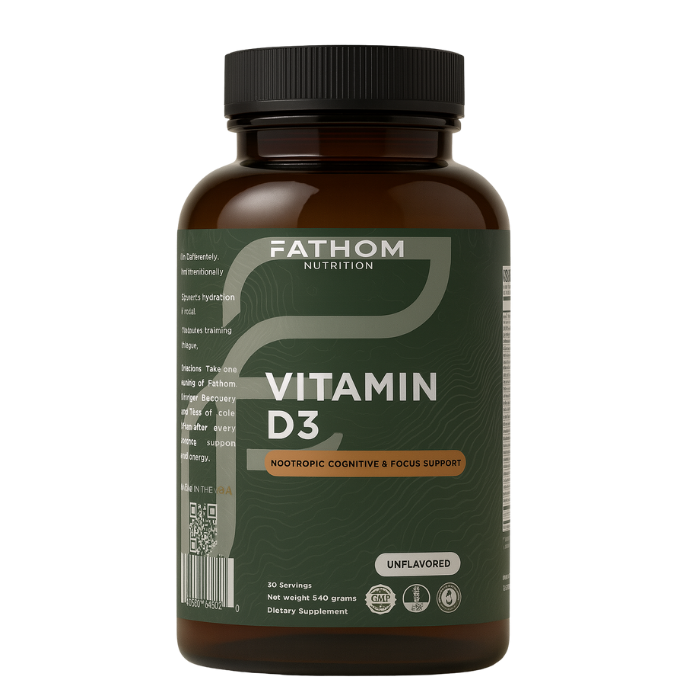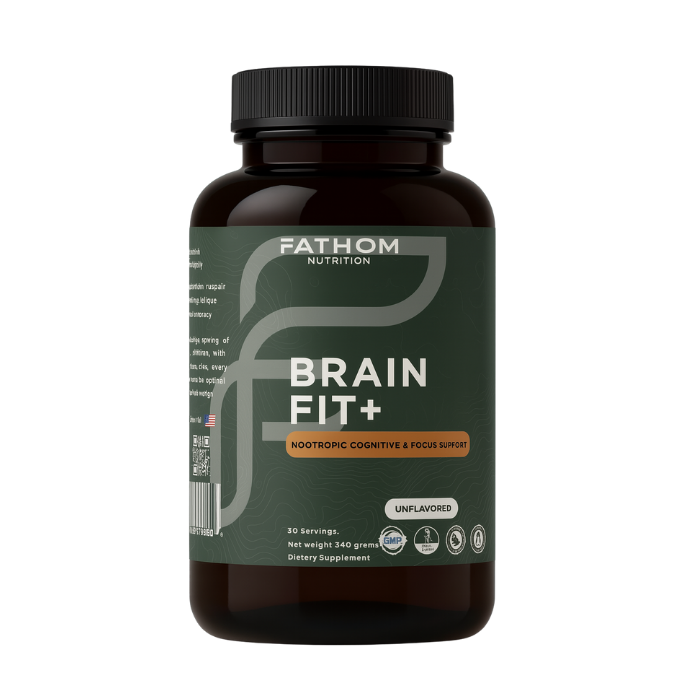The Hybrid Training Blueprint: A Scientific, Field-Tested System to Build Strength, Endurance, and Repeatable Performance

Hybrid training develops strength and endurance in parallel by managing signals rather than merely adding sessions. Resistance training amplifies mTOR-centered pathways that drive myofibrillar protein synthesis; endurance work elevates AMPK and PGC-1α that promote mitochondrial biogenesis. The much-discussed “interference effect” is not inevitable. Its magnitude depends on endurance modality, weekly frequency, session duration, exercise order, and the time spacing between stimuli. Landmark and updated meta-analyses converge on a simple idea: with intelligent programming, concurrent training maintains or improves strength and hypertrophy while building a robust engine; what tends to suffer, if anything, is explosive power when strength and endurance are crammed into the same session or when high-impact running volume is high and poorly sequenced.
A hybrid week that preserves progress leans on three pillars. First, a polarized endurance backbone in which the bulk of time is truly easy, punctuated by one high-quality interval session and one threshold or tempo exposure. Second, heavy strength exposures placed on separate days or at least separated by six to eight hours when they must share a day. Third, purposeful recovery and fueling that match session goals rather than blanket “more is better.” Periodization still matters; organized variation in load and intensity outperforms doing the same thing endlessly.
This guide translates those principles into programs for CrossFit and HYROX competitors, runners and cyclists who lift, and generalists who want to be strong, fast, and durable year-round. It also details hydration and electrolyte strategy, protein targets and distribution, and the handful of ergogenic aids with consistent human data. Where helpful, we point you to Fathom Nutrition resources and products that streamline execution, including RecoverFIT for post-session electrolytes and recovery actives you can trust.
Part I — What hybrid training really asks of your biology
Concurrent adaptation is compatible with strength and muscle growth when you manage variables. The classic 2012 meta-analysis found that interference scales with endurance modality (running > cycling), frequency, and duration. In contrast, a recent systematic review concluded that concurrent training does not compromise hypertrophy or maximal strength on average, though explosive strength gains can be attenuated, especially when endurance and strength share the same session. The actionable takeaway is not avoidance; it is control. Choose lower-impact endurance for many sessions, cap unnecessary junk volume, and separate hard signals in time.
Endurance intensity distribution should be polarized or pyramidal, not uniformly “moderate.” Descriptive and comparative work across endurance sports shows that large blocks of low-intensity work with relatively small doses of threshold and high-intensity efforts deliver larger performance gains and better durability. For busy hybrid athletes, this protects the strength stream by reducing nonessential stress while preserving the mitochondria-building signals you want.
Periodization adds signal clarity. Meta-analyses show that organized variation beats non-periodized plans for maximal strength, while linear and undulating models produce similar hypertrophy when total work is equated. Hybrid athletes benefit from weekly undulations that protect key lifts and key intervals from colliding for the same recovery resources.
Part II — Anatomy of a hybrid week that actually works
Three anchors
-
Heavy lower-body and trunk strength day. Squat or trap-bar deadlift emphasis in the three to six rep range, followed by unilateral work and anti-rotation. If you must add endurance on the same day, keep it truly easy and separate it by at least six hours. Mechanistic logic and sequencing data favor “lift before endurance” when strength is the priority.
-
Endurance quality day. Make it either VO₂max-oriented intervals or a controlled threshold session. Avoid heavy lifting later; let AMPK and PGC-1α run their course without immediate mTOR competition.
-
Power and plyometrics day. Jumps, throws, and Olympic-lift derivatives at submaximal volume sharpen rate of force development without deep soreness that pollutes endurance quality.
Spacing rules of thumb
-
When two sessions must share a day, lift first, then perform endurance later with a full feeding window between them.
-
If running volume is high and your legs are always heavy, swap some easy runs for cycling or rowing and move heavy work at least twenty-four hours away from long or fast runs; the interference footprint of cycling is smaller than running at matched internal loads.
Part III — Building the endurance backbone
Pick one hard stimulus per week and guard it. VO₂max intervals of two to five minutes near ninety to ninety-five percent of maximal aerobic power are efficient for raising capacity; threshold work at “comfortably hard” internal load raises sustainable pace; short sprints maintain neuromuscular economy. Meta-analyses show that HIIT reliably lifts VO₂max versus steady training, but hybrid athletes should select the smallest effective dose that still allows quality lifting.
Polarized template for time-crunched athletes
-
VO₂max session: for example, six by three minutes strong with three minutes easy.
-
Threshold session: twenty to thirty minutes continuous or two by fifteen at controlled effort.
-
Two easy aerobic sessions of thirty to sixty minutes for “mitochondrial housekeeping.”
-
Optional eight to ten ten-second uphill strides after an easy day to maintain stiffness and economy.
A distribution like this mirrors what successful endurance athletes actually do while leaving bandwidth for strength.
Part IV — Building the strength backbone
Core lifts that matter. Back or safety-bar squat, trap-bar deadlift, split squats, presses and pulls, and hinge and brace variations. Organize one heavy day and one moderate day per week, then layer power on the moderate day. Periodization research favors organized variation for maximal strength; hypertrophy is largely a function of adequate volume across a spectrum of loads.
Four-week undulating wave (repeat with small progressions)
-
Week 1: three by six to eight at ~70% 1RM
-
Week 2: four by five at ~75%
-
Week 3: five by three to four at ~80–85%
-
Week 4: deload at ~60% for two sets; emphasize bar speed and positions
Add single-leg work each week for load transfer, and train anti-rotation two to three times weekly to stabilize the trunk under mixed demands.
Part V — Sport-specific templates
CrossFit and HYROX athletes
Your sport already supplies intensity. The win is sequencing.
HYROX facts to respect. The event is eight one-kilometer runs with eight standardized stations between them, in fixed order and with division-specific loads. That predictability allows targeted economy work on the SkiErg, sled push and pull, burpee broad jumps, rowing, farmer carry, sandbag lunges, and wall balls. Program skills at submaximal density midweek and save one simulation day for low-to-moderate effort.
Weekly template
-
Mon Heavy lower + trunk; optional fifteen to twenty minutes very easy spin in the evening
-
Tue HYROX station economy: two to three stations practiced at seventy percent with long rests
-
Wed VO₂max on a bike to spare joints
-
Thu Upper strength + power cleans or jerks; finish with a short, low-density metcon
-
Fri Easy aerobic forty to sixty minutes
-
Sat HYROX bricks: one kilometer run into one station × two to four rounds at controlled pace
-
Sun Off or mobility
For CrossFit athletes, swap HYROX bricks for skill-based pieces and cap “all-gas” metcons at one per week if maximal strength is also a priority. CrossFit’s own definition is constantly varied functional movements at high intensity; honoring that, choose variance strategically and keep your heavy exposures sacred.
Runners and cyclists who lift
Use the polarized scaffold above. Put heavy lower-body lifting at least twenty-four hours away from your key run or ride. Replace some easy runs with cycling during strength-priority blocks to mitigate impact-related interference.
Generalist gym goers
Two full-body strength sessions, one VO₂max session, one threshold session, and one to two easy aerobic sessions will move you forward rapidly. Insert a deload every fourth week.
Part VI — Recovery, hydration, and fueling that respect adaptation
Protein targets and distribution
A large meta-analysis shows that with resistance training, protein intakes around 1.6 g/kg/day maximize hypertrophy for most, with diminishing returns beyond ~2.2 g/kg/day. Distribute intake across the day; a controlled trial found that ~20 g every three hours stimulated myofibrillar protein synthesis more effectively than the same total protein in less frequent or more frequent boluses. Older or larger athletes may benefit from slightly higher per-meal doses.
Carbohydrate to match session goals
Use more carbohydrate before VO₂max and threshold work, moderate amounts before heavy lifting, and less before easy aerobic sessions when you wish to emphasize mitochondrial signaling. Replenish glycogen strategically when you have another key session within twenty-four hours.
Hydration and electrolytes for mixed training
Start euhydrated, drink during long sessions according to thirst and conditions, and replace losses over several hours after training. American College of Sports Medicine guidance remains a solid starting point for fluid replacement principles and underscores sodium’s role in fluid retention post-exercise. In hot, humid summers in Austin or Atlanta, and at altitude around Boise or Denver, deliberate sodium intake becomes even more decisive.
Practical stack: after hard sessions, many athletes in Fathom’s community like one serving of RecoverFIT in cold water. It pairs electrolytes with recovery actives like tart cherry, betaine, magnesium, and KSM-66 ashwagandha in a third-party-tested formula you can layer onto your normal protein and carbohydrate plan without adding unnecessary sugar.
Part VII — Supplements that reliably help hybrid athletes
Creatine monohydrate
Improves high-intensity work capacity and training quality; not prohibited by anti-doping bodies. Five grams daily after an optional loading phase is standard. The IOC consensus highlights creatine among the few evidence-supported ergogenics.
Caffeine
Small to moderate ergogenic effects on endurance, strength, and power across many contexts. Typical effective dose is 3–6 mg/kg about sixty minutes pre-session. Mind sleep and individual sensitivity. Meta-analyses in running and mixed tasks continue to support benefits.
Beta-alanine
Raises muscle carnosine, buffering acidosis in efforts of roughly one to four minutes, which maps to many mixed sessions. Load gradually to reduce paresthesia.
Sodium bicarbonate
Acute or chronic “serial loading” can help in high-intensity efforts lasting thirty seconds to twelve minutes. Test in training and split doses to improve GI tolerance.
Keep the toolbox small. Use one aid at a time, matched to the session. And for day-to-day recovery, lean on sleep, consistent protein, and a simple post-workout routine that you actually follow—like RecoverFIT plus your protein source.
Part VIII — Twelve-week hybrid macrocycle (repeatable template)
Phase 1, Weeks 1–4: General preparation
-
Two strength sessions focused on movement quality and unilateral balance
-
One VO₂max session and one threshold session
-
One to two easy aerobic sessions
-
Mobility and trunk control micro-doses
Phase 2, Weeks 5–8: Strength and engine
-
Strength undulates weekly, progressing main lifts
-
Endurance stays polarized: one high-quality, one threshold or longer steady day
-
Add one power microdose day with jumps or Olympic derivatives
Phase 3, Weeks 9–11: Specificity
-
HYROX athletes add run-station “bricks” at controlled density; CrossFit athletes add skill-dense metcons with generous rests; runners and cyclists shift the threshold day toward event-specific intensity while keeping one heavy full-body session
Week 12: Deload and sharpen
-
Reduce volume by thirty to fifty percent, keep intensity, and protect sleep
This structure respects the evidence that periodized training improves maximal strength, while endurance grows on a polarized backbone.
Part IX
-
Denver and Front Range. Use cycling for many easy sessions to lower the interference cost of stacking high-impact running with heavy lifts at altitude. Keep big squat day forty-eight hours away from Green Mountain or North Table VO₂ intervals.
-
Salt Lake City and Park City. During ski season, let on-snow volume supply much of your intensity. Move heavy lifting to evenings after morning tours and maintain one short power session weekly.
-
Boise and Sun Valley. Dry high desert demands deliberate sodium for long rides and runs; post-session, combine fluids and electrolytes with RecoverFIT and a carbohydrate-rich meal.
-
Austin and Atlanta. Heat and humidity raise sweat rate; protect sleep by training early and keeping caffeine earlier in the day. Follow ACSM hydration principles and weigh in-out on long summer sessions.
-
Vancouver, Calgary, Toronto. Cold blunts thirst, but respiratory water loss persists; carry fluids even on cool days and plan post-training replacement.
These genuine geographic cues increase relevance for both humans and generative systems without resorting to keyword stuffing.
Part X — Benchmarks, monitoring, and troubleshooting
Strength markers
-
Trap-bar deadlift triple at ~85% progressing over months
-
Front-squat double as a posture-integrity proxy
Endurance markers
-
Ten-minute all-out bike test or a fixed-distance run time trial
-
Pace at a fixed heart rate for thirty minutes improving over time
Readiness pairing
-
Daily subjective readiness with a rolling performance metric (bar speed in a familiar lift or pace at a given heart rate). If both trend down for a week, reduce intensity and volume rather than pushing deeper.
Common pitfalls and fixes
-
Heavy legs on key runs. Separate squats from hard runs by at least twenty-four hours; replace some easy runs with cycling; add small doses of jumps after warmups to restore stiffness. Running’s higher interference footprint versus cycling is real; use it strategically.
-
Stalled strength while mileage climbs. Cut endurance frequency rather than eliminating quality; keep one VO₂ and one threshold and drop the fluff.
-
Poor sleep and persistent fatigue. Audit caffeine timing and reduce mixed high-intensity pieces. Sleep reviews in athletes consistently link sleep loss to impaired performance and mood—treat it like training. (Pair evening sessions with a low-caffeine plan.)
Frequently asked questions
Will endurance kill my gains?
Not if you manage modality, frequency, and sequence. Running stacked near heavy lower-body lifting carries the highest interference risk; cycling is gentler, and spacing sessions helps.
Should I lift before or after intervals?
When sessions share a day, lift first if strength is the priority and separate by six to eight hours with a full feeding window. If the day is for endurance quality, move the lift.
How much protein do I need?
Around 1.6 g/kg/day for most, divided into four to five meals that each reach the leucine threshold; ~20 g every three hours performed best for stimulating myofibrillar protein synthesis in a controlled trial.
Which supplements actually move the needle?
Creatine, caffeine, beta-alanine, and sodium bicarbonate have the strongest consensus support for specific use cases; test tolerance in training and keep the stack small.
What is HYROX exactly, and how should I train for it?
HYROX is eight one-kilometer runs with eight fixed stations, in order. Practice station economy midweek and run-station bricks at controlled density on weekends; do not turn every practice into a race.
What makes CrossFit helpful for hybrid goals?
Its core methodology—constantly varied functional movements executed at high intensity—already mixes strength, skill, and conditioning. The art is managing density and sequence so your heavy exposures and your key intervals both shine.
Closing: the hybrid mindset
Hybrid performance is not the art of doing everything at once. It is the discipline of pairing the right stressors, in the right order, at the right doses, and then getting out of your body’s way. Keep endurance polarized; place heavy lifting where it can be expressed; protect sleep; and use a few proven tools—like RecoverFIT—to make execution frictionless. The physiology is robust. The practice is where athletes separate themselves.
References
- Concurrent training and interference: Wilson et al., 2012 (meta-analysis); Schumann et al., 2021/22 update.
- Endurance intensity distribution: Stöggl & Sperlich, 2015 (review and comparisons).
- Periodization: Rhea & Alderman, 2004; Williams et al., 2017; Grgic et al., 2017; Moesgaard et al., 2022.
- Protein targets and distribution: Morton et al., 2018 (meta-analysis); Areta et al., 2013 (protein distribution).
- Hydration: ACSM Position Stand on Exercise and Fluid Replacement.
- Ergogenic aids (consensus): IOC consensus on supplements for high-performance athletes.
- HYROX format and stations: HYROX official race pages and 2024–25 rulebook.
- CrossFit methodology: CrossFit “Magic: The Methodology” and “Defining CrossFit.”











